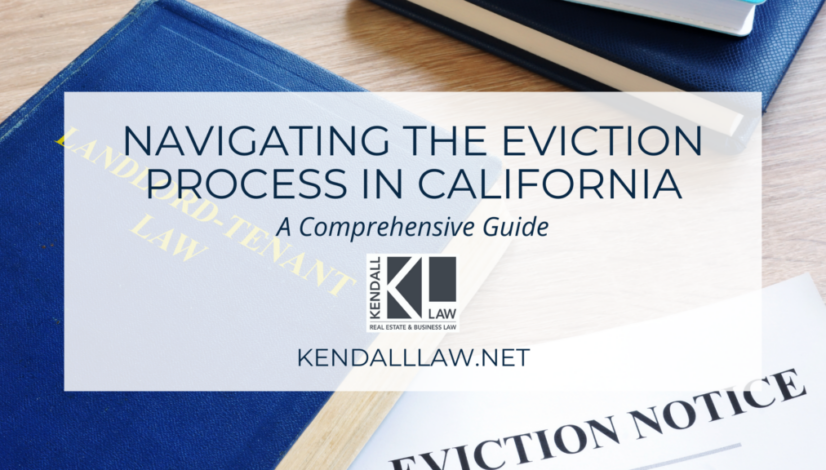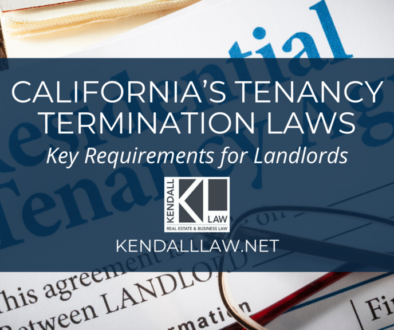Navigating the Eviction Process in California: A Comprehensive Guide
California has complex laws that govern landlord-tenant relationships, including the often-daunting process of eviction. This article serves as a guide to understanding the eviction process in California, outlining the legal steps, rights, and responsibilities of both landlords and tenants involved. (Note that this is not an exhaustive guide and eviction requirements are dictated based on the city in which your rental property is located.)
Grounds For Eviction
First, it’s important to understand the grounds for eviction and the local just cause restrictions that may apply to your particular jurisdiction in California which limit a landlord’s ability to terminate a lease for a tenant once that tenant has occupied the property for longer than 12 months.
In certain localities, eviction can only occur for valid reasons known as “just causes.” These causes fall into two main categories: “at-fault” and “no-fault” evictions. There are certain exempt properties that do not require just cause.
- At-Fault Evictions: These occur when a tenant has violated the terms of the lease agreement, such as failing to pay rent, engaging in illegal activities or causing significant damage to the property.
- No-Fault Evictions: These involve situations where a tenant is evicted for reasons not directly related to their own behavior. Examples include the property owner’s intent to move into the rental property, extensive repairs or renovations made to the property or the property’s withdrawal from the rental market.
Notice Requirements
The eviction process begins with the landlord providing the tenant with a written notice that outlines the reason for eviction and the time frame for corrective action. The type of notice depends on the cause of eviction:
- 3-Day Notice to Pay Rent or Quit: This notice is issued when a tenant fails to pay rent on time.
- 3-Day Notice to Cure or Quit: This is given for lease violations other than non-payment of rent, allowing the tenant to fix the issue within three days.
- 30-Day or 60-Day Notice to Quit: For no-fault evictions, landlords must typically give tenants either 30 or 60 days’ notice, depending on the length of the tenancy and local regulations.
Unlawful Detainer Lawsuit
If the tenant fails to comply with the eviction notice or does not vacate the property, the landlord can file an unlawful detainer lawsuit in the appropriate California court. This legal action initiates the formal eviction process. Both parties have the right to present their case before a judge.
Court Proceedings and Judgment
During the court proceedings, both the landlord and tenant present their arguments, evidence, and witnesses. The judge will then make a ruling based on the presented information. If the landlord prevails, the court issues a writ of possession, allowing law enforcement to physically remove the tenant if necessary.
Enforcement of Eviction
While landlords cannot forcibly evict tenants themselves, law enforcement can step in to enforce the eviction order. Sheriffs or marshals will post a notice of eviction on the property, giving the tenant a final opportunity to vacate voluntarily. If the tenant remains, law enforcement will physically remove them, and the landlord can regain possession of the property.
Tenant Protections
California is known for its robust tenant protections, including:
- The right to a habitable dwelling: Landlords are legally required to provide safe and habitable living conditions.
- The right to challenge eviction: Tenants can contest evictions by responding to the unlawful detainer lawsuit and presenting their case in court.
- Protection against retaliation: Landlords cannot evict tenants in retaliation for asserting their legal rights or reporting housing code violations.
Conclusion
The eviction process in California is a complex legal procedure that involves multiple steps and considerations. Whether you are a landlord seeking to regain possession of your property or a tenant facing eviction, it is crucial to understand your rights and responsibilities under the law.
Consulting with legal professionals, such as Kendall Law’s landlord-tenant law attorneys can provide valuable guidance and support throughout this often challenging process. Contact the team at Kendall Law today or call 310-619-4941 to schedule a consultation. Working with a real estate attorney can help you avoid costly legal disputes and financial pitfalls.
Please note that the information provided at this website is intended for general educational and informational purposes only, and should not be construed as legal advice or a substitute for legal advice from a qualified attorney in your jurisdiction.
Author: Eileen Kendall





